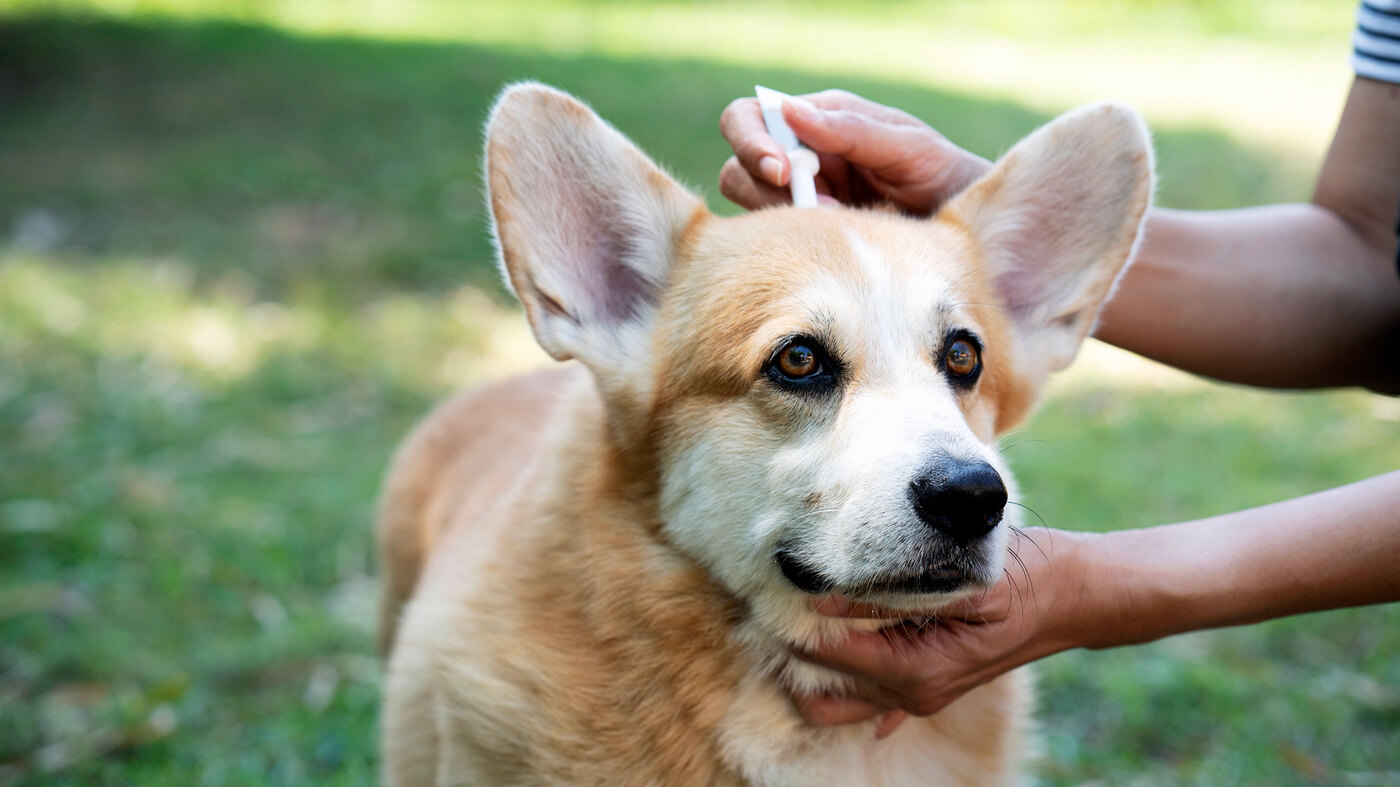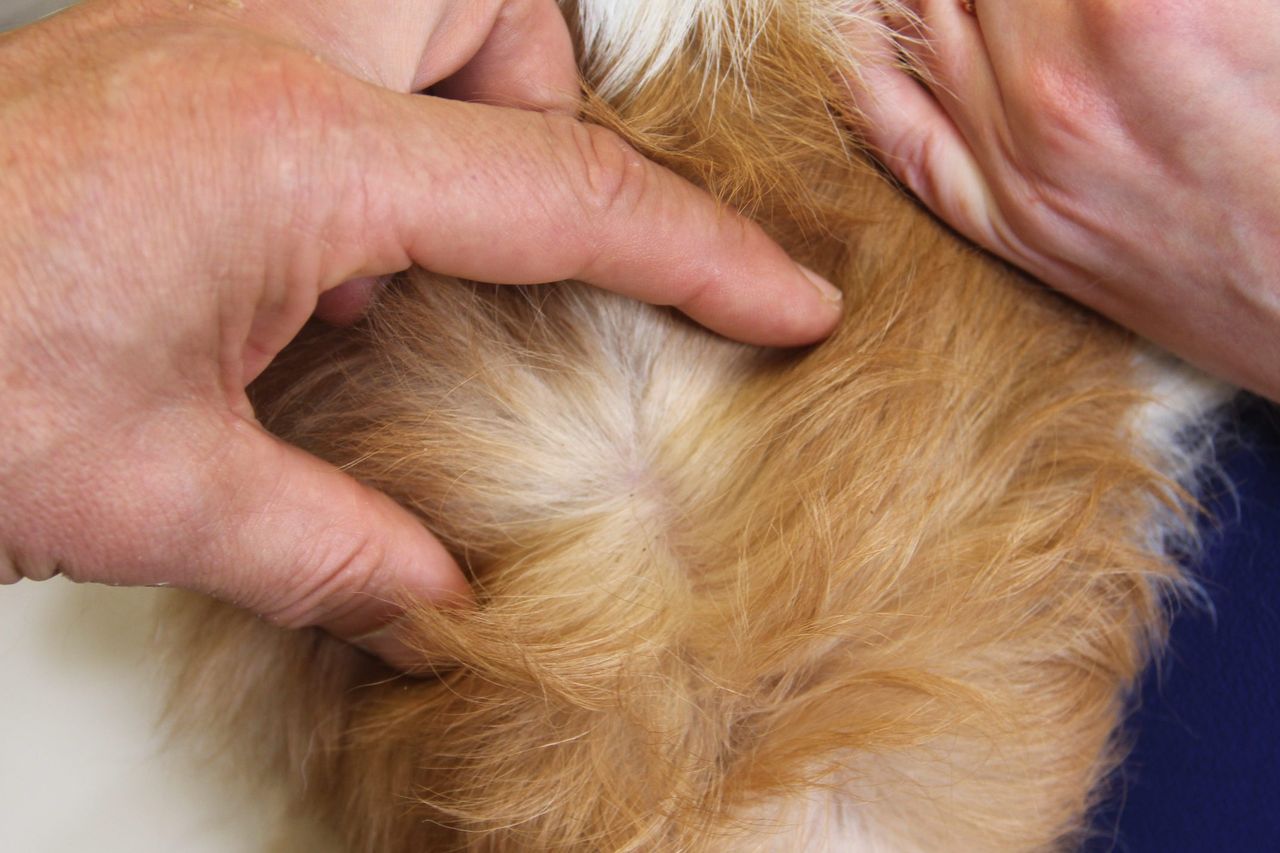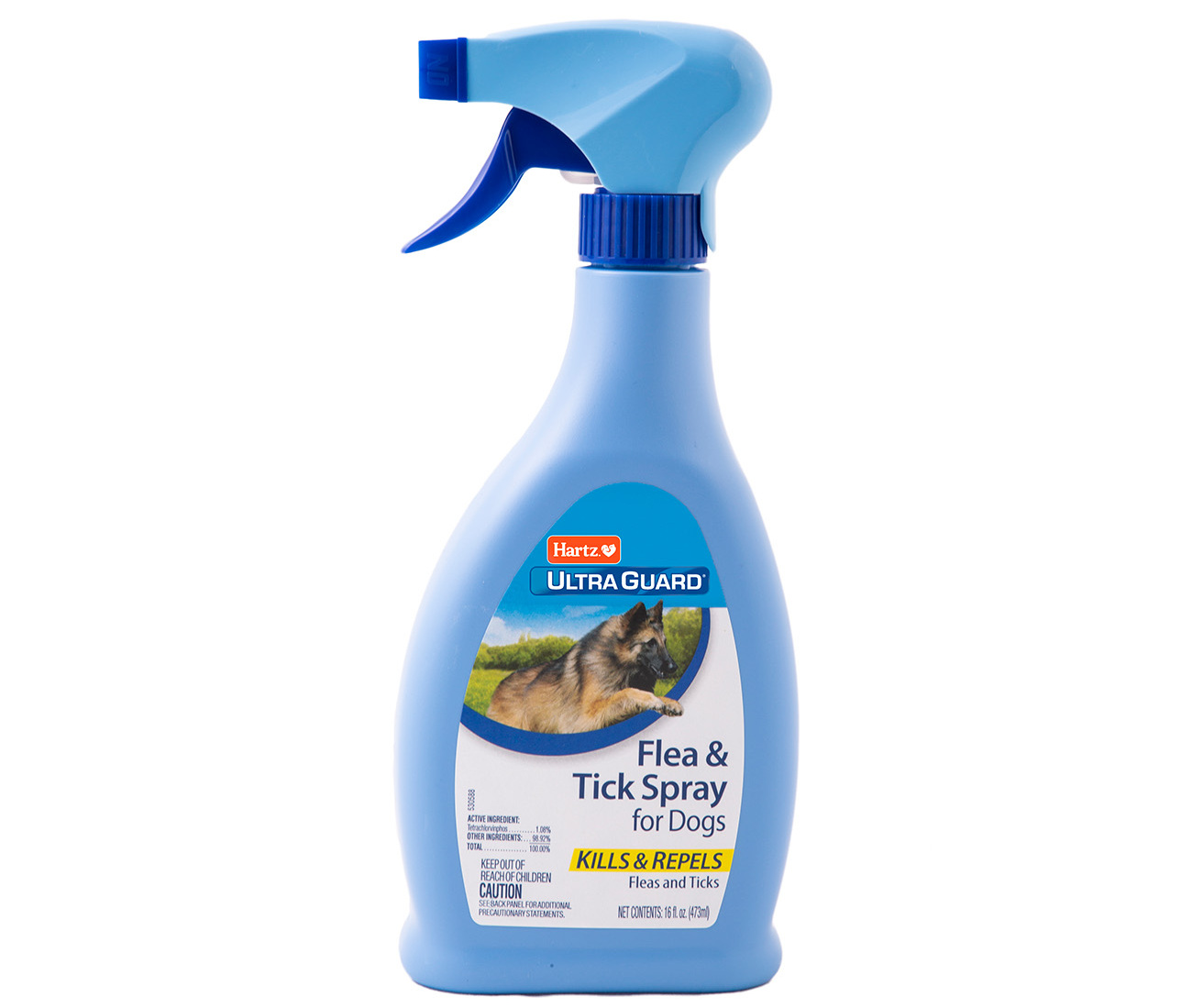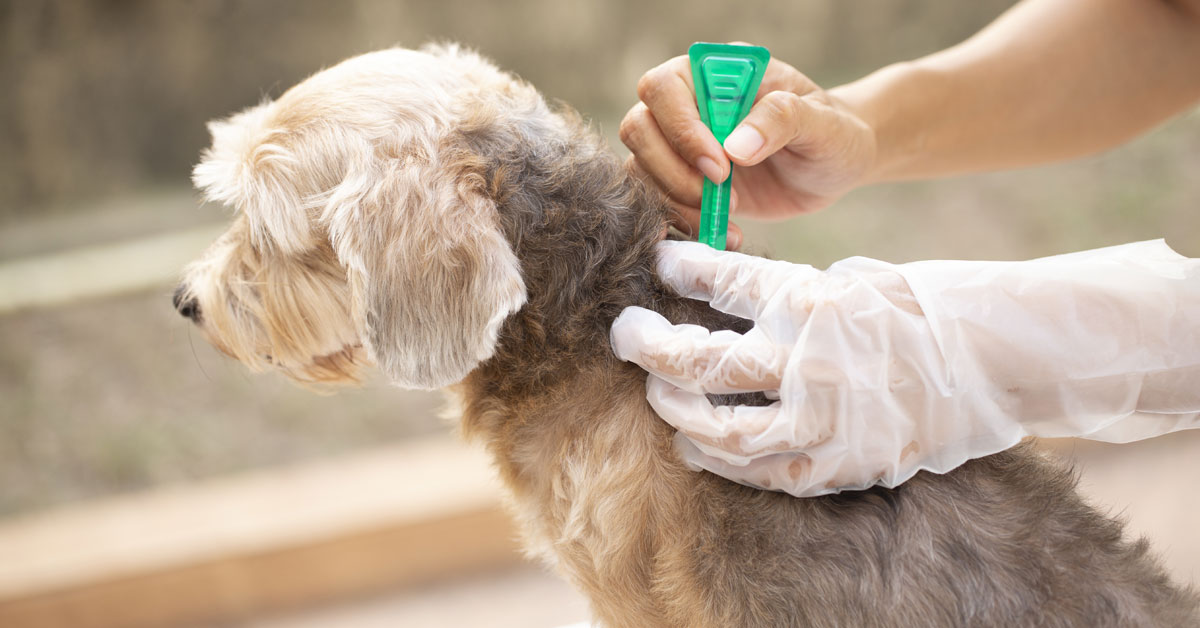Home>Health & Wellness>Common Health Issues>How Do Dog Collars For Fleas And Ticks Work


Common Health Issues
How Do Dog Collars For Fleas And Ticks Work
Published: February 14, 2024
Learn how dog collars for fleas and ticks work to prevent common health issues. Find out the best ways to protect your pet from these pesky parasites.
(Many of the links in this article redirect to a specific reviewed product. Your purchase of these products through affiliate links helps to generate commission for Pawsomeoldies.com, at no extra cost. Learn more)
Table of Contents
Introduction
Dog owners understand the joy and responsibility that comes with caring for their furry companions. While dogs bring immense happiness and companionship, they can also be susceptible to various health issues, including flea and tick infestations. These tiny parasites not only cause discomfort to dogs but can also pose health risks to both pets and their human families. Fortunately, there are effective solutions to combat these pesky pests, and one popular method is through the use of dog collars specifically designed to repel fleas and ticks.
In this comprehensive guide, we will delve into the world of dog collars for fleas and ticks, exploring their functionality, benefits, and tips for optimal usage. By understanding how these collars work and the advantages they offer, dog owners can make informed decisions to safeguard their pets from these common health issues. So, let's embark on this enlightening journey to uncover the secrets behind the effectiveness of dog collars for fleas and ticks.
Understanding Fleas and Ticks
Fleas and ticks are among the most prevalent parasites that can affect dogs, causing a range of health issues and discomfort. Understanding the characteristics and behaviors of these tiny pests is crucial for effective prevention and treatment.
Fleas
Fleas are wingless insects that survive by feeding on the blood of their hosts, including dogs. These tiny, agile creatures can jump impressive distances, allowing them to move swiftly between hosts. Flea infestations can lead to symptoms such as excessive scratching, skin irritation, hair loss, and in severe cases, anemia. Moreover, fleas can transmit diseases and parasites, posing a risk to both pets and humans.
Ticks
Ticks are arachnids that attach themselves to the skin of animals, including dogs, to feed on their blood. These parasites are commonly found in outdoor environments, such as wooded areas and tall grass. Ticks can transmit various diseases, including Lyme disease and Rocky Mountain spotted fever, making them a significant health concern for dogs and their owners. Detecting and removing ticks promptly is essential to prevent potential health complications.
Both fleas and ticks thrive in warm and humid environments, making them prevalent during the spring and summer months. However, they can pose a year-round threat in certain regions. Due to their resilience and ability to reproduce rapidly, controlling flea and tick infestations requires proactive measures.
By gaining insight into the behavior and impact of fleas and ticks, dog owners can appreciate the importance of implementing preventive strategies. This understanding sets the stage for exploring the effectiveness of dog collars designed to combat these persistent parasites, providing a valuable layer of defense for canine companions.
Types of Dog Collars for Fleas and Ticks
When it comes to protecting dogs from fleas and ticks, dog owners have access to a variety of collars designed to repel and eliminate these pesky parasites. Each type of dog collar offers unique features and benefits, catering to different preferences and requirements. Understanding the distinct characteristics of these collars is essential for selecting the most suitable option for a beloved canine companion. Here are the primary types of dog collars for fleas and ticks:
-
Chemical-Based Collars: These collars are infused with chemicals that repel and kill fleas and ticks upon contact. The active ingredients, such as tetrachlorvinphos, deltamethrin, or flumethrin, are gradually released onto the dog's skin and coat, providing long-lasting protection. Chemical-based collars are highly effective in preventing infestations and are available in various durations, ranging from several weeks to several months.
-
Ultrasonic Repellent Collars: Utilizing advanced technology, ultrasonic repellent collars emit high-frequency sound waves that are imperceptible to dogs and humans but disrupt the sensory systems of fleas and ticks. This innovative approach deters parasites from latching onto the dog's fur and skin, offering a non-chemical alternative for flea and tick control. Ultrasonic repellent collars are favored by pet owners seeking natural and non-invasive solutions for pest prevention.
-
Natural Essential Oil Collars: Harnessing the power of nature, these collars are infused with essential oils known for their insect-repelling properties. Ingredients such as cedarwood, peppermint, and citronella create a natural barrier against fleas and ticks, providing a gentle yet effective defense for dogs. Natural essential oil collars are ideal for pet owners who prioritize organic and eco-friendly pest control methods.
-
Adjustable Reflective Collars: Beyond their primary function of flea and tick prevention, these collars offer additional safety features. Designed with reflective materials, they enhance visibility during low-light conditions, promoting the safety of dogs during evening walks or outdoor activities. These collars provide a multifaceted approach by combining pest control with enhanced visibility, catering to the holistic well-being of dogs.
-
Water-Resistant Collars: Ideal for active dogs that enjoy water-based activities, these collars are designed to withstand exposure to moisture without compromising their effectiveness. Whether dogs love swimming, playing in the rain, or exploring damp environments, water-resistant collars ensure continuous protection against fleas and ticks, regardless of outdoor conditions.
By exploring the diverse range of dog collars for fleas and ticks, pet owners can identify the most suitable option based on their dog's lifestyle, preferences, and specific pest control needs. Each type of collar offers distinct advantages, empowering dog owners to make informed decisions to safeguard their canine companions from flea and tick infestations.
How Dog Collars for Fleas and Ticks Work
Dog collars for fleas and ticks employ various mechanisms to effectively combat and prevent infestations, providing a convenient and long-lasting solution for pet owners. Understanding the functionality of these collars is essential for comprehending their impact on pest control and the well-being of dogs.
Chemical-Based Collars
Chemical-based collars utilize active ingredients such as tetrachlorvinphos, deltamethrin, or flumethrin, which are gradually released onto the dog's skin and coat. These chemicals repel and kill fleas and ticks upon contact, creating a protective barrier that lasts for several weeks to months. When parasites come into contact with the treated surface, they are either repelled or succumb to the potent effects of the active ingredients, effectively preventing infestations.
Ultrasonic Repellent Collars
Ultrasonic repellent collars harness advanced technology to emit high-frequency sound waves that disrupt the sensory systems of fleas and ticks. While imperceptible to dogs and humans, these sound waves create an inhospitable environment for parasites, deterring them from latching onto the dog's fur and skin. This innovative approach offers a non-chemical alternative for flea and tick control, providing a gentle yet effective method of repelling pests.
Natural Essential Oil Collars
Collars infused with natural essential oils, such as cedarwood, peppermint, and citronella, create a natural barrier against fleas and ticks. These essential oils are known for their insect-repelling properties, effectively warding off parasites without the use of harsh chemicals. The aromatic compounds present in essential oils create an environment that is unfavorable for fleas and ticks, offering a natural and eco-friendly approach to pest control.
Adjustable Reflective Collars
In addition to flea and tick prevention, adjustable reflective collars enhance the safety of dogs during low-light conditions. These collars are designed with reflective materials that improve visibility, promoting the safety of dogs during evening walks or outdoor activities. While providing enhanced visibility, these collars also serve as a proactive defense against fleas and ticks, offering a multifaceted approach to pet care.
Water-Resistant Collars
Water-resistant collars are designed to withstand exposure to moisture, making them ideal for active dogs that enjoy water-based activities. Whether dogs love swimming, playing in the rain, or exploring damp environments, these collars ensure continuous protection against fleas and ticks, regardless of outdoor conditions. The water-resistant feature enhances the durability and effectiveness of the collars, providing reliable pest control in various environments.
By incorporating these diverse mechanisms, dog collars for fleas and ticks offer a comprehensive approach to pest control, catering to the unique needs and preferences of pet owners. Whether through chemical-based treatments, ultrasonic technology, natural essential oils, enhanced visibility, or water-resistant features, these collars provide a versatile and long-lasting solution for safeguarding dogs from flea and tick infestations.
Benefits of Using Dog Collars for Fleas and Ticks
The utilization of dog collars designed to repel fleas and ticks offers a multitude of benefits for both dogs and their owners. These innovative collars serve as a proactive and long-lasting solution to combat and prevent infestations, contributing to the overall well-being of canine companions. Let's explore the compelling advantages of incorporating dog collars for flea and tick control:
1. Continuous Protection:
Dog collars for fleas and ticks provide continuous protection against these persistent parasites. Unlike topical treatments that may require frequent reapplication, these collars offer extended effectiveness, creating a reliable shield for dogs. This continuous protection is particularly valuable for pet owners seeking a low-maintenance yet highly effective approach to pest control.
Read more: How Do Dogs Get Ticks And Fleas
2. Convenience and Ease of Use:
The simplicity and convenience of using flea and tick collars contribute to their appeal among pet owners. Once the collar is securely fastened around the dog's neck, it seamlessly integrates into the daily routine without the need for frequent applications or administration. This hassle-free approach simplifies pest control, allowing dogs to enjoy uninterrupted protection without causing disruptions to their activities or comfort.
3. Long-Lasting Effectiveness:
Dog collars infused with active ingredients or innovative technologies offer long-lasting effectiveness, ensuring that dogs remain shielded from fleas and ticks for an extended period. This sustained protection alleviates the need for frequent reapplications, providing peace of mind for pet owners while effectively preventing infestations. The durability and longevity of these collars make them a practical and reliable choice for pest control.
4. Versatile Pest Control:
With a diverse range of dog collars available, pet owners can select options that cater to their dog's specific needs and lifestyle. Whether opting for chemical-based collars, ultrasonic repellent collars, natural essential oil collars, or specialized designs such as adjustable reflective or water-resistant collars, the versatility of these products allows for tailored pest control solutions. This adaptability ensures that dogs receive personalized protection suited to their individual requirements.
5. Reduced Exposure to Harsh Chemicals:
For pet owners concerned about the potential risks associated with traditional chemical-based treatments, natural essential oil collars offer a gentle yet effective alternative. By harnessing the power of nature, these collars provide a natural barrier against fleas and ticks without exposing dogs to harsh chemicals. This approach aligns with the growing preference for organic and eco-friendly pest control methods, promoting the well-being of dogs while effectively repelling parasites.
6. Enhanced Comfort and Well-Being:
The use of flea and tick collars contributes to the overall comfort and well-being of dogs by preventing the discomfort and health risks associated with infestations. By creating a protective barrier against parasites, these collars help dogs maintain their physical and emotional well-being, allowing them to thrive in a safe and pest-free environment. This enhanced comfort fosters a positive and fulfilling experience for both dogs and their owners.
In summary, the benefits of using dog collars for fleas and ticks encompass continuous protection, convenience, long-lasting effectiveness, versatility, reduced exposure to harsh chemicals, and enhanced comfort for dogs. By embracing these advantages, pet owners can proactively safeguard their beloved canine companions from the persistent threat of flea and tick infestations, promoting a harmonious and thriving environment for their pets.
Tips for Using Dog Collars for Fleas and Ticks
-
Proper Fit: Ensure that the dog collar fits snugly around the dog's neck without being too tight or too loose. A proper fit is essential to maximize the effectiveness of the collar and prevent it from becoming entangled or causing discomfort to the dog.
-
Regular Inspection: Periodically inspect the dog collar to ensure that it remains securely fastened and in good condition. Check for any signs of wear and tear, and promptly replace the collar if it shows signs of damage to maintain its efficacy.
-
Complementary Measures: While dog collars for fleas and ticks offer valuable protection, consider complementing their use with additional preventive measures, such as regular grooming, environmental pest control, and veterinary-recommended treatments. This multi-faceted approach enhances the overall defense against parasites.
-
Transition Period: When introducing a new flea and tick collar, allow for a transition period to acclimate the dog to wearing the collar. Monitor the dog's comfort and behavior during this period, providing reassurance and positive reinforcement to facilitate a smooth adjustment.
-
Environmental Considerations: Be mindful of the dog's environment and potential exposure to fleas and ticks. Whether in urban or rural settings, understanding the prevalent risks and adjusting preventive strategies accordingly contributes to comprehensive pest control.
-
Regular Replacement: Adhere to the manufacturer's guidelines regarding the replacement schedule for the dog collar. Whether it requires replacement every few months or annually, maintaining a consistent schedule ensures that the dog receives continuous protection against fleas and ticks.
-
Consultation with Veterinarian: Prior to selecting a flea and tick collar, consult with a veterinarian to determine the most suitable option for the dog's specific needs and health considerations. Veterinarians can provide valuable guidance on selecting the appropriate collar and optimizing its usage.
-
Monitoring for Adverse Reactions: Keep a close eye on the dog for any signs of adverse reactions or sensitivity to the collar. If the dog exhibits unusual behavior or skin irritation, discontinue use and seek veterinary advice promptly.
By adhering to these tips, dog owners can maximize the effectiveness of flea and tick collars while prioritizing the well-being and comfort of their beloved pets. These proactive measures contribute to a comprehensive and tailored approach to pest control, fostering a safe and thriving environment for dogs.
Conclusion
In conclusion, the utilization of dog collars for fleas and ticks represents a proactive and effective approach to safeguarding canine companions from the persistent threat of parasitic infestations. By understanding the behavior and impact of fleas and ticks, pet owners can appreciate the importance of implementing preventive strategies. The diverse range of dog collars available, including chemical-based, ultrasonic repellent, natural essential oil, adjustable reflective, and water-resistant collars, offers versatile solutions tailored to the specific needs and preferences of dogs and their owners.
The benefits of using dog collars for flea and tick control are compelling, encompassing continuous protection, convenience, long-lasting effectiveness, versatility, reduced exposure to harsh chemicals, and enhanced comfort for dogs. These collars provide a reliable and low-maintenance defense against infestations, contributing to the overall well-being of canine companions.
Furthermore, adhering to essential tips for using flea and tick collars, such as ensuring proper fit, regular inspection, complementary measures, and consultation with a veterinarian, maximizes the efficacy of these preventive solutions. By incorporating these proactive measures, pet owners can create a safe and thriving environment for their beloved pets, promoting a harmonious and fulfilling experience for both dogs and their human families.
In essence, dog collars for fleas and ticks serve as invaluable tools in the ongoing effort to protect dogs from the discomfort and health risks associated with parasitic infestations. By embracing the innovative features and benefits of these collars, pet owners can proactively address the persistent threat of fleas and ticks, fostering a safe and pest-free environment for their cherished canine companions.











